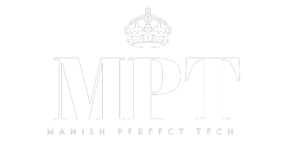No matter how creative or brilliant the ad, placement is the only way it’s going to be seen by the intended audience. Therefore, buying the best ad order to space at the best price and targeting it to the right audience, is the whole shakedown, really.
What is programmatic advertising?
Programmatic advertising is defined as the machine-controlled buying and selling method of online advertising area. The marketplace for digital advertising space is go by ad exchanges, who operate computerized auctions that assemble each parties of the transaction:
• Advertisers, who wish to shop for ad space on the internet.
• Publishers, the web site owners with digital space to sell. Programmatic advertising takes the whole process to a brand new level. It uses algorithmic package that handles the sale and placement of digital ad impressions via ad exchange platforms – in a very fraction of a second.
Programmatic conjointly incorporates traffic information and online targeting strategies to serve impressions more accurately, expeditiously and at scale, which suggests higher ROI for advertisers and publishers alike.
How does programmatic ad buying work?
Here’s the programmatic shopping for waft in a nutshell:
• A individual clicks on a internet site
• The internet site proprietor places the advert influence up for auction (SSP)
• Advertisers provide bids for the influence (DSP)
• The maximum bidder wins the advert influence
• The ad is served at the internet site to the consumer
• The consumer (hopefully!) clicks at the advert and converts.
Despite the various steps involved, this whole method occurs in an instant. What’s more, the competing bids are calculated with the aid of using algorithms and a bunch of analytics to mechanically decide the maximum cost-powerful bid. For example, if the consumer who clicked at the internet site is a robust ability purchaser to your advert, primarily based totally on their historic browsing statistics and on line profile, the bid served to your influence might be higher.
What is a Demand-Side Platform (DSP)?
In each buy of on-line advert area, there are sides: the buyers (advertisers) and the sellers (publishers). Each aspect makes use of a automated platform to facilitate the transaction at the advert exchange: publishers use Supply-Side Platforms (SSP) and advertisers use Demand-Side Platforms (DSP). A DSP permits advertisers to buy advert impressions on writer websites, made to be had thru advert exchanges and networks. It additionally permits advertisers to goal positive audiences thru records together with location, age, preceding on-line conduct and more. The advertiser enters bids for advert area thru the DSP, and the DSP mechanically allocates advert impressions to abased at the advertiser’s bid charge and target target market concentrated on preferences.
Types of programmatic advertising
There are numerous special methods of providing and obtaining inventory withinside the programmatic ecosystem. The 4 primary methods are: open auctions, private exchanges, preferred deals, and programmatic guaranteed deals.
Programmatic Real-Time Bidding (RTB)
Open Auction
Also Known As: Open Exchange, Real-Time Bidding (RTB), Open Marketplace,
Open auctions are open to all. All entrepreneurs at the exchange/SSP/advert community have an possibility to bid on all available publisher inventory.
Its is the maximum traditional form of programmatic auctions. With real-time bidding, publishers can set the ground price for an ad, however the marketer call for nevertheless determines the final charge, and the highest bid wins.
Inventory isn’t guaranteed. Historically, Open Auctions got here with a few risks. Publishers wouldn’t constantly recognize who became buying the stock, that may harm their emblem image. Meanwhile, stock isn’t always disclosed, so marketers didn’t constantly recognize what they’d be getting.
Private Ad Exchange
Known As: Private Marketplace (PMP), PMP Programmatic, Private Auction, Invitation-Only Auction
A private exchange is another kind of real-time bidding, however instead of being receptive all marketers and all publishers, one publisher invitations a mere few marketers to participate.
private exchanges are quickly turning into trade standard. In 2020, America ad pay in private exchanges outpaced open auctions for the primary time.1
To access the auction, these hand-selected marketers can would like a time-sensitive deal ID. Publishers set a floor price, and therefore the bidding starts there. As within the open auction, the best bid wins. Inventory isn’t guaranteed.
Programmatic Direct
Preferred Deal
Known As: Unreserved Fixed Rate, Programmatic Non-Guaranteed
A preferred Deal may be a private, 1:1 relationship between a publisher and a marketer. in a very preferred Deal, publishers provide premium inventory to the marketer at a pre-negotiated fixed eCPM value
whereas eCPMs are a small amount higher, marketers are paying to induce what’s basically “first dibs” on premium ad space. once an advert request comes through, a marketer with a preferred deal has a chance to bid at the pre-negotiated fixed eCPM price in real time, before the inventory heads to open auction. Inventory isn’t guaranteed.
Programmatic Guaranteed
Known As: Guaranteed Buy, Programmatic Direct, Automated Guaranteed
With a guaranteed buy, a publisher offers specific, reserved inventory to a marketer at a set price.
Publishers and marketers discuss a price for a guaranteed volume of impressions, or flight date. this can be almost like a right away sale/buy, however programmatic automation replaces the manual IO process, up potency and reducing error.
What are the benefits of programmatic advertising?
Programmatic advertising provides benefits that were unimaginable just 5 or 10 years ago. And it is getting more sophisticated as new ad tech comes onto the scene. Here are some of the key advantages of programmatic advertising…
- Reach
Programmatic advertising supports multiple ad exchanges and networks, which gives advertisers access to far more ad space on thousands of websites at once. Advertisers can advertise at scale at affordable prices and with no extra work.
- Targeting beyond CTR
CTR is not a KPI. It doesn’t matter how many clicks you get – if they are not turning into conversions, all the clicks in the world won’t count for much. Programmatic advertising supports advanced targeting, such as interest targeting and lookalikes, to help advertisers reach high-quality audiences at scale.
- Transparency
Programmatic advertising gives advertisers and publishers real-time access to data about ad placements and activity, which helps to maximize transparency. The next step is achieving transparency in programmatic costs, which is a key issue facing the industry.
- Relevancy
Programmatic ad buying gives advertisers access to a massive ad inventory across multiple ad exchanges and networks with a click of the mouse, including premium inventory and private marketplaces with high-quality traffic. With programmatic, advertisers can make sure to maximize the relevancy of their ads for specific targeted audiences and improve ROAS.
- Data insights & reporting in real-time
Programmatic exchanges provide access to real-time data and advanced reporting about ad placements and performance, so advertisers and publishers can optimize campaigns quickly and accurately at scale.
How much does programmatic advertising cost?
Programmatic advertising works on a CPM (Cost Per Mille), or Cost Per Impression, model. CPM is the price per 1000 ad impressions that appear on a website. Programmatic ads CPM is usually cost somewhere between $0.50 and $2. Certainly, programmatic CPM is cheaper than other platforms, such as social media networks where CPM can go as high as an average $5-$6. In fact, the cost of programmatic advertising depends on multiple factors and parameters.
How to get started with programmatic?
For newbie’s to programmatic advertising, the best place to begin is by getting educated. Watch webinars, listen to podcasts about programmatic, and network with colleagues about best practices.
Once ready to get started, begin with developing your audience personas, advertising strategy, and KPIs. This will help you in your research about which programmatic ad exchanges and ad networks are right for you.







